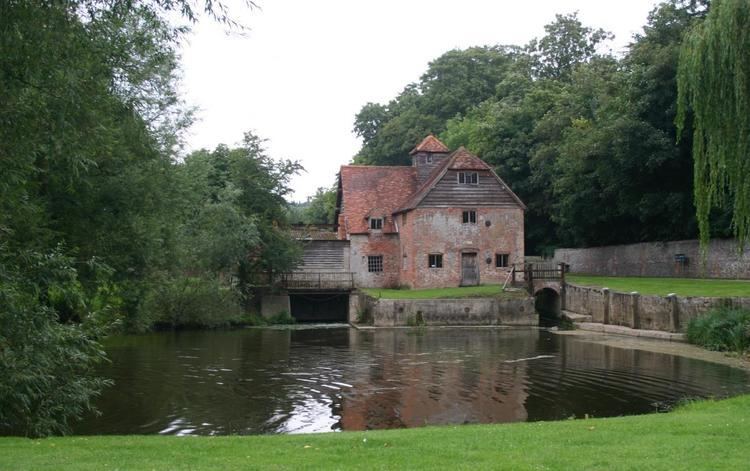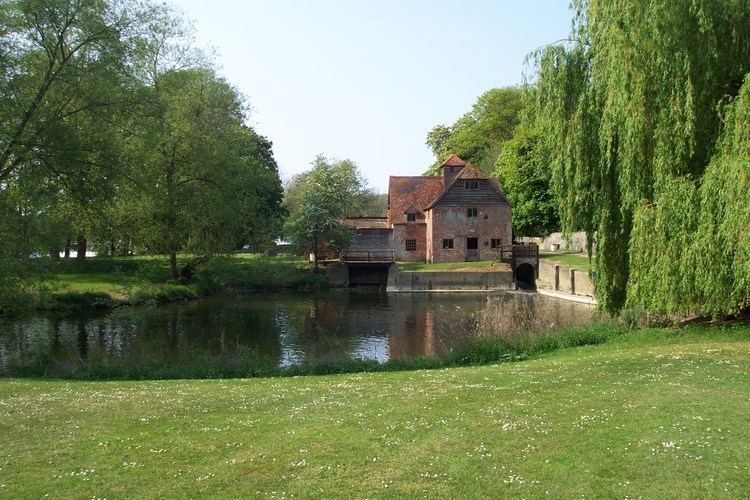Built 15th to 19th century Designated 24 October 1951 | Reference no. 1059523 | |
Similar Mapledurham House, Mapledurham Lock, Wallingford Museum, Charlbury Museum, Champs Chapel Museum | ||
Mapledurham watermill original black sabbath photo spot
Mapledurham Watermill is a historic watermill in the civil parish of Mapledurham in the English county of Oxfordshire. It is driven by the head of water created by Mapledurham Lock and Weir, on the River Thames. The mill was built in the 15th century, and further extended in the 17th, 18th and 19th centuries. It is a grade II* listed building and is preserved in an operational state.
Contents
- Mapledurham watermill original black sabbath photo spot
- Inside the working mapledurham watermill
- History
- Admission and access
- Media coverage
- References

The mill also houses a micro hydro-electric power station, using a 3.6-metre (12 ft) Archimedes' screw turbine to generate electricity for sale to the National Grid. The turbine produces some 83.3 Kilowatts, which is sufficient to power about 140 homes.

Inside the working mapledurham watermill
History

A mill was already present at Mapledurham at the time of the Domesday Book. The central section of the current mill building dates back to the 15th century. Originally the mill had a single water wheel, on the river side of the building. The mill was increased in size in the 1670s, and a leat was constructed to drive a second water wheel on the village side. It is this second wheel which is still in use today.

In 1690 the mill was leased to James Web for the sum of £60 per year. Around 1700 he expanded the mill again, to allow him to install the equipment to produce the refined flour that was becoming popular. His son Daniel Webb took over from him in 1726 at a rent of £100. In 1747, Thomas Atrum took over the mill at a rent of £150 p.a. in 1747, which was raised to £205 in 1776. In 1777 a barn was added on the mill island, and a wharf built to allow the mill to supply flour to the London market by barge. However, by 1784 Thomas Atrum was bankrupt.

The mill continued to flourish, and as late as 1823 plans were drawn up to rebuild the mill in classical style. The advent of cheap imported flour from North America damaged the mill's prosperity, but it remained in use until just after the Second World War. On 24 October 1951, the watermill was designated as a grade II* listed building. It was restored and brought back into use in 1980.
In 2011, work started on the installation of a new Archimedes' screw turbine on the river side of the watermill in order generate electricity. This replaced a previous turbine installed in the 1920s to provide power to Mapledurham House that was no longer functional. At the time the turbine was inaugurated in 2012, it was the most powerful turbine on the River Thames, and the largest of its type in the country.
Admission and access
The mill is located in the grounds of Mapledurham House, and like the house is open to visitors on weekend and bank holiday afternoons from April to September. The water mill is normally working on opening days, and visitors can visit both main floors of the mill, and see (and feel) its operation.
Admission is charged, and joint tickets are available that allow admission to both house and mill. Access is by car down the narrow and steep lane that is Mapledurham village's only road connection, or by a boat service that runs from Thameside Promenade in Reading on all opening days.
Media coverage
The mill building is best known, and has gained worldwide recognition, for being featured on the cover of the eponymous 1970 debut album of the heavy metal band Black Sabbath.
The watermill is also known for its starring role in the 1976 film of The Eagle Has Landed, where the mill leat is the scene of the dramatic rescue of a local girl by a German paratrooper that results in the unmasking of Steiner and his men.
The mill appears in the introductory credits to the BBC television programme, Richard Hammond's Blast Lab, as the supposed hidden location of the underground lab. The mill also appears in the Midsomer Murders episode The Fisher King (season 7; episode 3), as the scene for the discovery of a body.
